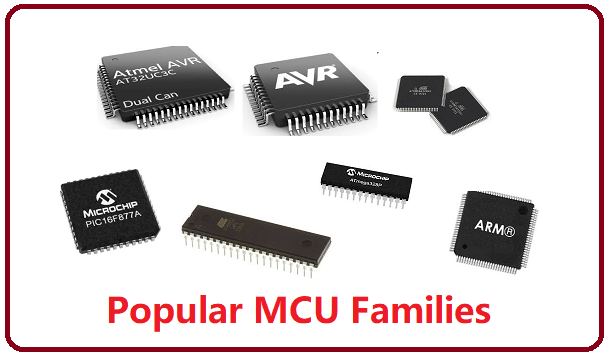
What are the differences between popular MCU families (e.g., ARM Cortex-M, AVR, PIC, ESP32)?
Global electronic component supplier AMPHEO PTY LTD: Rich inventory for one-stop shopping. Inquire easily, and receive fast, customized solutions and quotes.
Here's a comparison of popular microcontroller (MCU) families—ARM Cortex-M, AVR, PIC, and ESP32—focusing on architecture, performance, ecosystem, and use cases:

1. ARM Cortex-M (e.g., STM32, NXP LPC, TI Tiva)
-
Architecture: 32-bit ARM Cortex-M0/M3/M4/M7
-
Performance: High; clock speeds from tens to hundreds of MHz, with FPU, DSP support on M4/M7
-
Power Efficiency: Excellent with various low-power modes
-
Development Tools: STM32CubeIDE, Keil MDK, IAR, PlatformIO
-
Ecosystem: Large vendor support (ST, NXP, TI, etc.), extensive libraries (HAL, CMSIS)
-
Use Cases: Industrial, consumer, automotive, IoT, medical
-
Pros:
-
Scalable performance and features
-
Wide toolchain support
-
-
Cons:
-
Steeper learning curve for beginners
-
2. AVR (e.g., ATmega328P, ATtiny)
-
Architecture: 8-bit RISC
-
Performance: Modest; ~20 MHz typical
-
Power Efficiency: Good for 8-bit class
-
Development Tools: Arduino IDE, Atmel Studio (Microchip Studio)
-
Ecosystem: Arduino ecosystem widely adopted
-
Use Cases: Hobby, education, basic embedded applications
-
Pros:
-
Simple to use, especially with Arduino
-
Strong community support
-
-
Cons:
-
Limited performance and peripherals
-
Not ideal for complex tasks
-
3. PIC (e.g., PIC16, PIC18, PIC32)
-
Architecture: 8-bit, 16-bit, and 32-bit variants
-
Performance: Wide range; 8-bit PICs are simple, 32-bit PIC32s are more powerful
-
Power Efficiency: Good, especially on low-end devices
-
Development Tools: MPLAB X IDE, XC compiler family
-
Ecosystem: Well-established, but less community-driven than AVR/ARM
-
Use Cases: Industrial control, consumer devices, low-cost applications
-
Pros:
-
Long history and stable availability
-
Microchip's full ecosystem support
-
-
Cons:
-
Mixed architecture base adds complexity
-
Smaller open-source community
-
4. ESP32 (Espressif)
-
Architecture: 32-bit Xtensa dual-core (ESP32), single-core in some variants
-
Performance: High; up to 240 MHz, built-in Wi-Fi + Bluetooth
-
Power Efficiency: Very good for a Wi-Fi-enabled chip
-
Development Tools: Arduino, ESP-IDF, PlatformIO
-
Ecosystem: Huge due to IoT and Maker popularity
-
Use Cases: IoT, smart home, wearable, hobbyist Wi-Fi applications
-
Pros:
-
Integrated Wi-Fi/Bluetooth
-
Excellent value and community support
-
-
Cons:
-
Power management can be tricky for battery apps
-
Non-ARM architecture can pose porting issues
-
Summary Table:
| Feature | ARM Cortex-M | AVR | PIC | ESP32 |
|---|---|---|---|---|
| Architecture | 32-bit ARM | 8-bit RISC | 8/16/32-bit RISC | 32-bit Xtensa |
| Performance | High | Low | Varies (Low to High) | High |
| Connectivity | External modules | External modules | External modules | Wi-Fi + Bluetooth |
| Ease of Use | Moderate | Very Easy (Arduino) | Moderate | Easy (Arduino) |
| Popular Tools | STM32CubeIDE, Keil | Arduino IDE | MPLAB X | Arduino, ESP-IDF |
| Community Support | Strong | Very Strong | Moderate | Very Strong |
| Best For | Professional apps | Beginners, DIY | Cost-sensitive apps | Wireless IoT |
Related Articles
- ·STM32 four precision control methods for stepper motors
- ·What is the lowest power STM32 MCU? how to choose?
- ·Blue Pill vs Black Pill: What’s the Difference and How to Choose?
- ·Why can STM32 stand out from many 32-bit microcontrollers?
- ·How to distinguish fake chips?
- ·How do I secure an MCU from hacking or tampering?
- ·What are the advantages and disadvantages of using SoCs in embedded systems?
- ·How to implement a multi class neural network with STM32F103?
- ·Comparison of ARM vs. RISC-V MCUs
